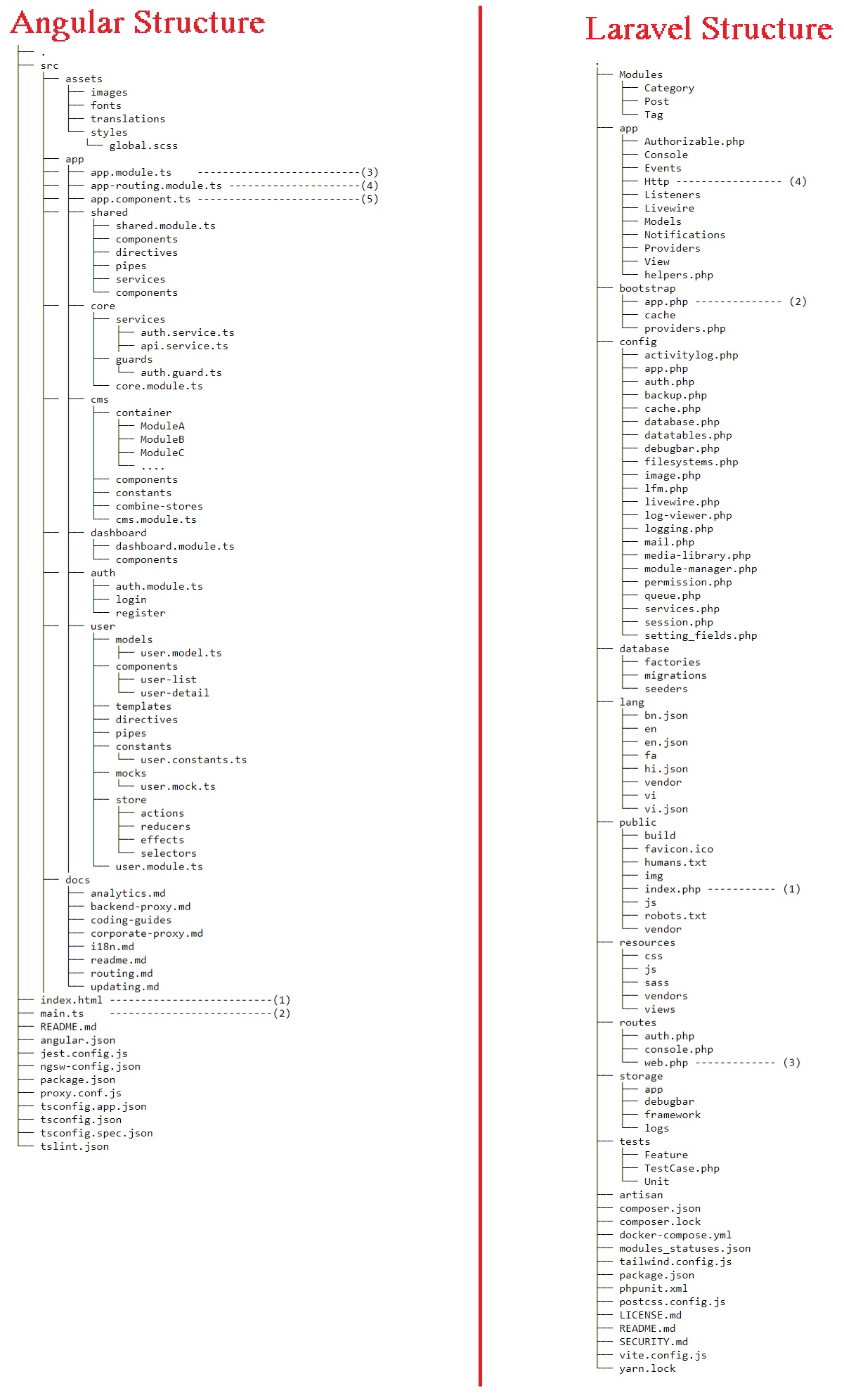Differences in Structure: Angular vs Laravel
Sraban Pahadasingh September 07, 2024 02:05 AMAngular and Laravel are both widely used frameworks, but they belong to different areas of development. Angular is a front-end framework for building web applications, while Laravel is a back-end PHP framework. Both frameworks adopt modular structures to promote scalability, reusability, and maintainability, but they handle modularity differently due to their distinct purposes.
Here’s a comparison of their modular structures:
1. Angular Modular Structure (Front-end Framework)
Purpose:
Angular uses modules to organize the front-end application. Its goal is to break down the user interface and associated logic into smaller, reusable pieces.
Core Concepts:
- Modules: Angular applications are built using NgModules. These modules bundle components, services, directives, and other code into cohesive blocks of functionality.
- Feature Modules: Specific to a certain feature or section of the application (e.g., user management, product listings).
- Shared Module: A module that contains shared components, pipes, and directives used across multiple feature modules.
- Core Module: Contains singleton services like authentication and API handlers that are used globally across the application.
Structure:
- Components: Components define views (UI) and their associated logic.
- Services: Singleton objects for handling business logic and data fetching.
- Pipes: Custom transformations for displaying data.
- Directives: Custom behavior that can be applied to the DOM.
- Routing: Handles navigation between components and modules.
2. Laravel Modular Structure (Back-end Framework)
Purpose:
Laravel’s modular structure is used to organize the backend logic. It focuses on separating different concerns, such as routing, models, controllers, services, and views.
Core Concepts:
- Modules: Laravel applications are typically organized into MVC (Model-View-Controller) patterns or package-based modularization.
- Models: Define the data structure and interact with the database.
- Controllers: Handle HTTP requests and business logic, then return views or JSON responses.
- Views: Blade templates for rendering HTML or emails.
- Service Providers: Register services, configuration, or package-related code.
- Routes: Define the routes and endpoints of the application.
- Middleware: Handle HTTP request/response manipulation, authentication, etc.
Laravel Package Approach: Laravel also supports a more modular architecture by using packages or third-party libraries to encapsulate code for specific features (e.g., API, authentication).
Key Differences in Modular Structure
| Aspect | Angular (Front-end) | Laravel (Back-end) |
|---|---|---|
| Modular Unit | NgModules (Feature Modules, Shared/Core Modules) | MVC (Models, Views, Controllers) |
| Purpose | Organize UI, components, and client-side logic | Organize server-side logic and HTTP responses |
| UI Components | Components, Directives, Pipes | Blade Templates for views |
| Service Layer | Services for handling state, data, and APIs | Service Classes, Providers for business logic |
| Routing | Angular Router (client-side routing) | Web & API routes (server-side routing) |
| State Management | NgRx (optional, for managing state) | No built-in state management |
| Shared Functionality | Shared Module (Reusable components, services, etc.) | Service Providers, Middleware, Packages |
| Feature Separation | Feature Modules (Encapsulated features) | Controllers, Models, Services for each feature |
| Lazy Loading | Lazy loading of modules for performance | Laravel doesn’t inherently support lazy loading |
| Assets | Styles, images, and resources managed via assets/ |
Blade Views and assets managed via resources/ |
| Package System | Libraries for reusable code within the project | Composer packages for third-party integration |
Summary
-
Angular is primarily focused on organizing front-end logic and components through NgModules, which include views, services, and routing that are tightly coupled to the user interface. It's highly modularized with features like lazy loading and shared modules to optimize performance and reusability.
- Laravel, being a back-end framework, organizes the application using the MVC pattern, focusing on HTTP handling, business logic, and data interactions. It uses service providers, middleware, and routing to structure the backend efficiently, and views are rendered using Blade templating. Laravel’s modules are based on a package system that encapsulates functionality like authentication, notifications, and more.
Both structures are modular but are designed for different purposes and domains: Angular for front-end logic and Laravel for backend operations.
